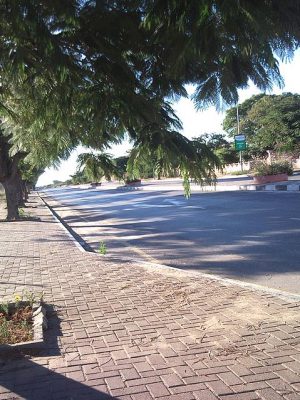Otjiwarongo, as it is known today, came into existence mainly because of the need to find a connection between Swakopmund, Windhoek and Tsumeb. The powers that that were (Germany) knew about the copper ore in the Otavi (Tsumeb) area and they needed to get the ore to the coast for shipping back to Germany. At first, they wanted to develop Port Alexander, but that was 730 kilometers from Otavi and Swakopmund was only 581 kilometers away. The Germans also knew what South Africa was like, but they did not have good faith in the future Angola.
They did however also keep options open in case trouble presented itself with South Africa and thus it was imperative that the rail road was built via Outjo. Another factor to consider was Waterberg area, with enough water and fertile soil it was seen as a growth point. Thus based on these factors the decision was taken to establish the link between Waterberg and Outjo 378 kilometers (Otjiwarongo).
The narrow gauge rail was completed in 1906 and the first train arrived on the 2nd April 1906.
Otjiwarongo settled down and at that same year the Post Office and Police station was opened. The first inhabitants were Hans Beurger, Julius Doll, August Laszig and Paul Witt.
One of the locomotives that served that first community and town was given the honorary spot in front of the station building in Otjiwarongo. The narrow gauge served Otjiwarongo from 1906 to 1960. Many stories is told by some of the towns people even today every time a story is told one can see a special glimmer in the eyes of the story teller of the reminders of an era gone by. One of these stories tells about the first rail accident that was recorded in 1906. Apparently, the investigating team found that passenger Suessmann handed the driver a case of beer for the road between Usakos and Otjiwaronog, because, in those days, the journey could be long and arduous and one could become thirsty!
In front of the station you can see the old steam engine No. 41, built in 1912 by the Henschel company in Kassel, Germany. It used to run on the railway line from Swakopmund to Otavi.
















